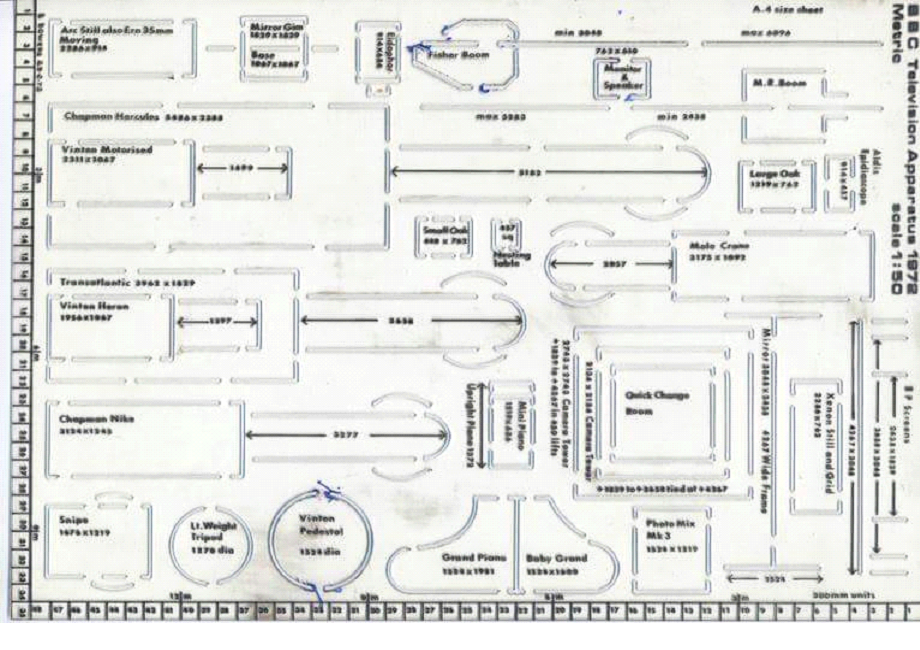Alec Bray
Have any of you got dimensions for the microphone booms, such as the Mole Richardson and the Fisher (those being the only two that I know!): size (width and length), platform heights, max and min boom reach and so on, cradles, types of mics allowed etc , and any manufacturing info, usage considerations and so on?What about hand-held "booms" (query what are these called?).
Barry Bonner
Here’s the sizes of the various booms, including the little used mini-boom, as per my BBC stencil…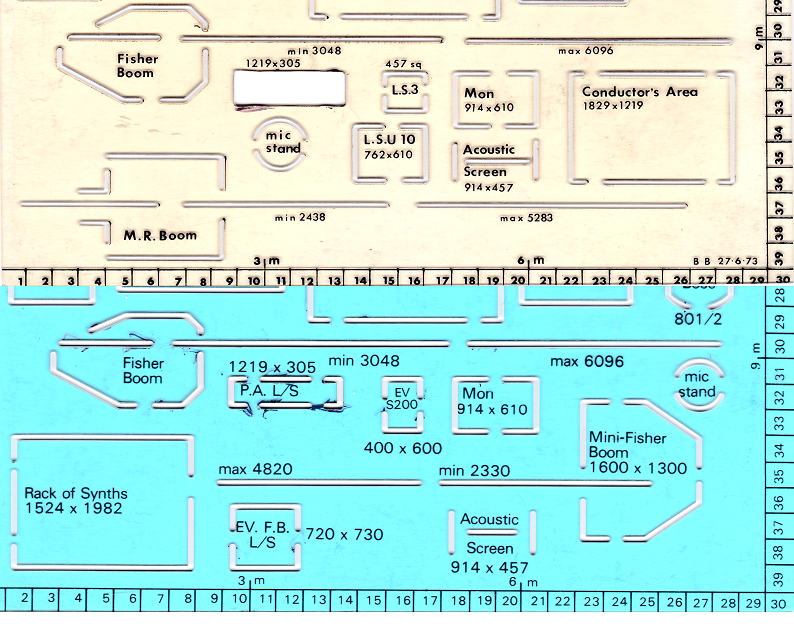
The hand-held booms we called “fishing rods’ or “poles”….how quaint!
Brian Curtis
Indeed, "fishing rods" or "fishing poles"!Very quaint as in 1970 they were literally lengths of 1 inch diameter bamboo pole with a microphone screw mount "glued" or camera taped to the end to mount the mic, usually an AKG C28. At the other end a "project box" was taped on which had a jack for Prog/TB.
One of my main tasks when working on "Elizabeth R" on Crew 5 was to be the "Fishing pole" operator tracking backwards alongside a camera ped as Glenda Jackson and Ronald Hine or Robert Hardy walked along a long "corridor" set (Hampton Court?)
David Newbitt
I well remember the rough and ready full extension of the MR boom as 17 ft. reach. I see from your splendid stencil it would actually have been 17 ft. 4 ins. This is a poor repro of a page from the Mole Richardson catalogue for 1960:The Americans were obviously less precise than the Beeb – 17 ft (give or take).…
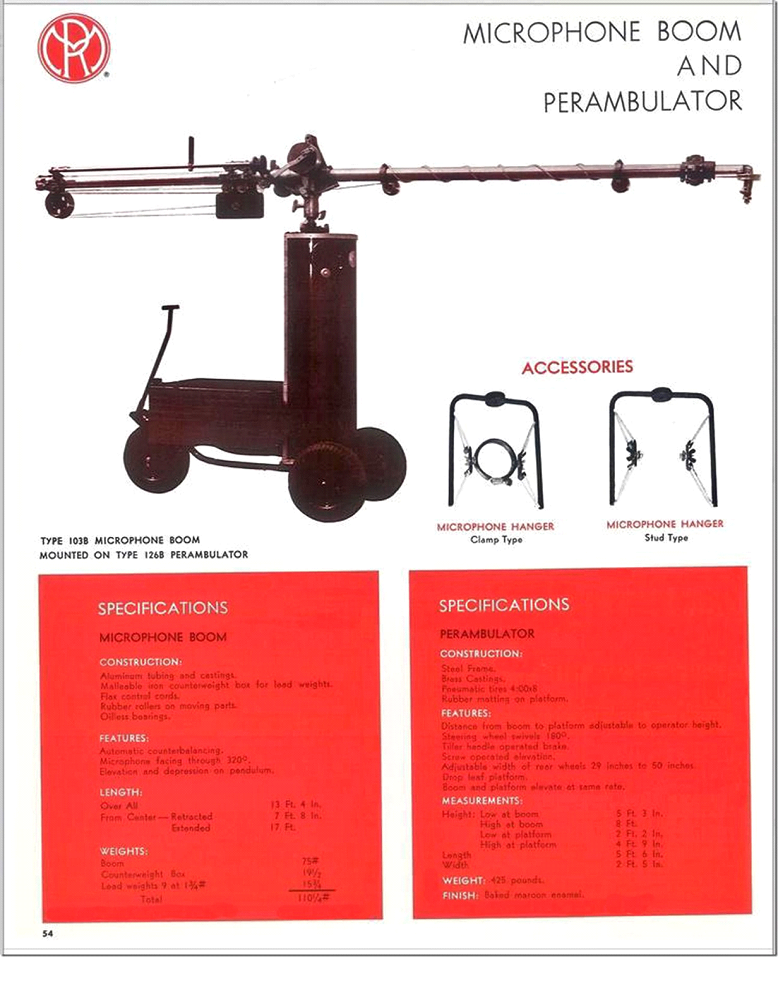
Dave Mundy
Perhaps Pat Heigham can clarify – I can’t imagine a Fisher boom being used outdoors so when someone gets a ‘Boom’ credit on a feature film don’t they mean ‘fish-pole operator?’.Pat Heigham
I’ve never known the ‘studio’ Fisher being used outside, but the mini-Fisher, known by me as the ‘film’ Fisher was frequently used by the BBC Film Unit out of Ealing. One was taken to Yugoslavia for ‘Fiddler on the Roof’. The arm just fitted on brackets inside our sound truck which was a Citroen, with the corrugated sides! With an 815 or 816, in the capable hands of operator John Stevenson, virtually 100% of usable dialogue sound was achieved. Or John used a Panamic pole on congested sets.Boom Operator was the screen credit (if given at all!) whether a pole or dolly boom was involved.
I agree that the more sensible way of operating the studio Fisher, or Mole Richardson, was to have the arm at hip level, thus the balance was such that a slight downward pressure was needed from the left hand to control the angle of the arm.
I have the idea that the studio Fisher had a reach of 33 ft, thus enabling pedestal cameras to have enough room to work in front.
I operated the ‘film’ Fisher on a Pinewood movie, with electronic cameras, which severely restricted their space.
In the late sixties, in the TVT, the M-R boom was fitted with an extra ‘u’ shaped bracket under the 4033, to take a C28. It meant running two mic cables over the pulleys, but that seemed to work OK.
On Films these days, it’s seldom that a dolly boom is used, nearly all is done with poles – this has a detrimental problem, because the telescopic facility is lost, and if the set is a real room, not much space to walk backwards and forwards to follow.
I have a story wherein Michael Winner spent a considerable time telling me how to Boom Operate!
Barry Bonner
We only used the shorter version (approx. 20ft.) of the Fisher in the TC studios. Cameras could work right up to the platform as there was sufficient height with the platform at the top.Pat Heigham
… I still have 33ft in my memory.As well as room in front for cameras, it was necessary to be able to reach the back of a sit-com set. I doubt that 20ft would be sufficient.
From the Fisher website, here is the 33 ft entry, which probably stuck in my head:
| ||||||||||||||||||||||||||||
Maximum payload: 5 pounds (2.27 kg)
Boom pivot: 52 degrees
Boom pan: 360 degrees
David Deness
I agree with Barry. The studio Fishers at every TV studio I’ve ever operated in had a reach of 20 ft, and the MR 18ft 6 ins as I recall.One can always find someone imagining something is bigger than reality.
Martin Eccles
The JL Fisher website has specifications of all the boom variations…The BBC had modified model 6 bases with manual pump and modified model 7 arms but as to what length I cannot remember.
They were modified because the Americans worked sitting down with their hands almost above their heads and we worked stood up so that body weight could be used to move the arm about. That meant the platform had to be fixed closer relative to the arm on top of the column.
After the Mole booms that took an STC 4033 mic, the Fishers started off with an AKG D25 then later an AKG C451 as standard microphones.
Albert Barber
Cyc Curves
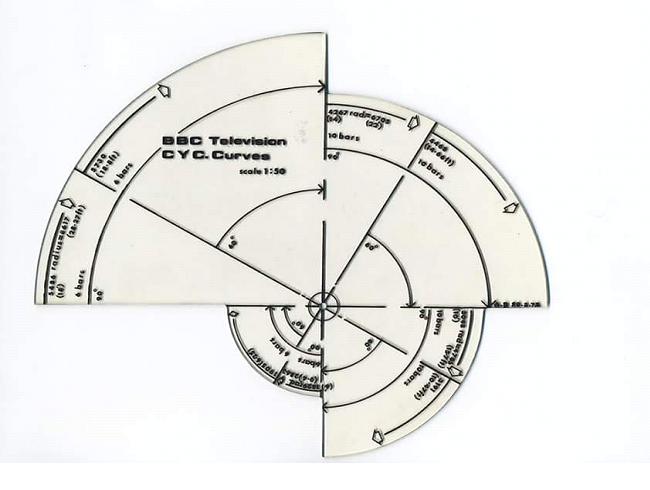
Studio Equipment Stencils
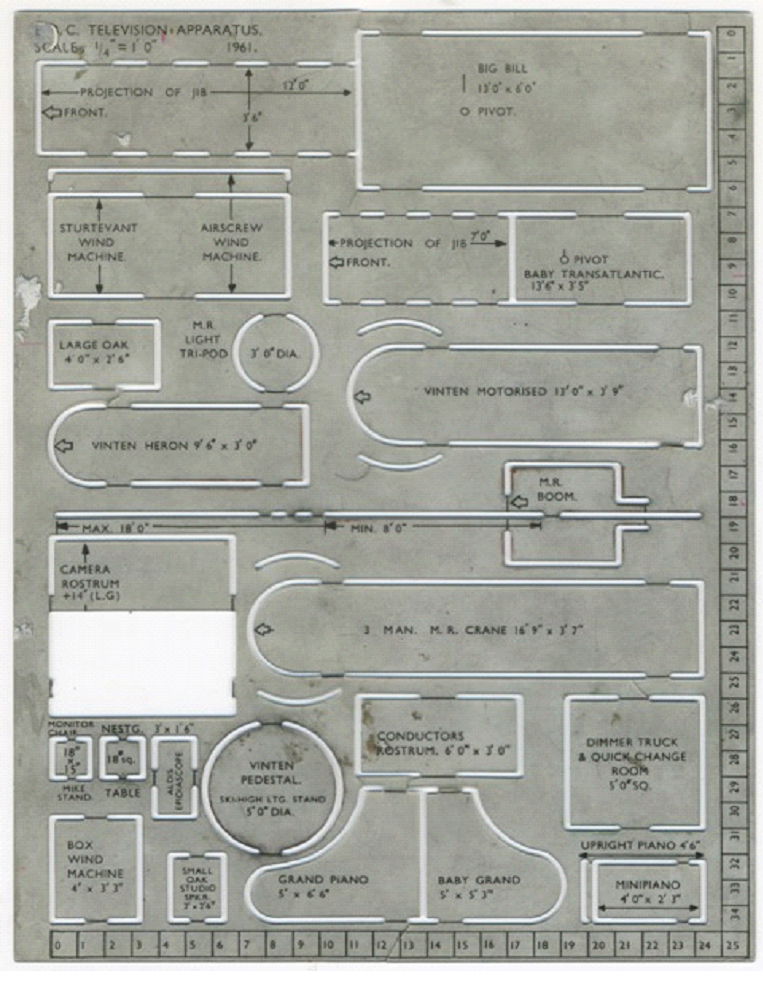
1978 – Hercules, Nike Crane, Fisher Boom etc
